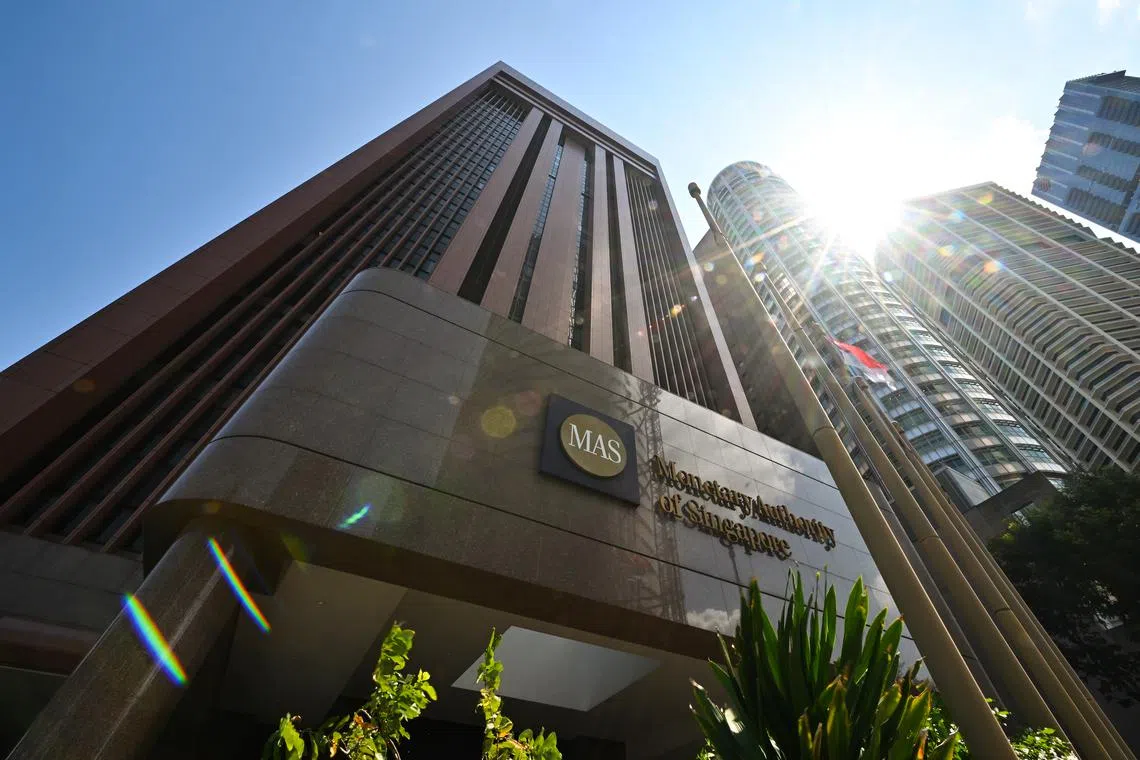COP29: Singapore joins EU and China in expanded taxonomy on green financing
Sign up now: Get ST's newsletters delivered to your inbox

The expansion would allow capital market participants to assess which economic activities could be considered green.
PHOTO: ST FILE
Janice Lim
Follow topic:
SINGAPORE - Singapore green bond and loan issuers could have easier access to European Union and Chinese investors if their debt instruments are aligned with an updated taxonomy spanning these three jurisdictions.
Launched on Nov 14 at the COP29 climate summit
The Multi-Jurisdiction Common Ground Taxonomy (M-CGT), as it is called, contains 110 economic activities across eight sectors – taken from the EU, China and Singapore taxonomies – that could be eligible for green financing.
It builds on earlier efforts to improve the interoperability of the EU and China taxonomies – the two biggest green finance markets globally. This means coming up with similar guiding principles across both taxonomies, so that the methods used to define green economic activities are comparable.
This led to the development of a bilateral CGT between the EU and China in 2020. An updated version in 2022 identified 72 activities across seven sectors that are green.
The mapping of Singapore’s national taxonomy onto the CGT – one year after it was released at 2023’s COP28 in Dubai – further enhances its interoperability.
“While the M-CGT is not legally binding, green bonds and funds that align with the M-CGT criteria can be considered by cross-border investors whose markets reference the taxonomies which are mapped to M-CGT, subject to applicable laws and regulations of each jurisdiction,” read a joint statement by the People’s Bank of China, European Commission and Monetary Authority of Singapore (MAS).
The lack of taxonomy alignment had been an issue in sustainable financing over the past few years, with many investors and financial institutions saying that the varying standards across different markets have stymied the cross-border flow of green capital.
While the M-CGT is only mapped across three taxonomies, it can also serve as a reference for other jurisdictions that are developing their domestic green taxonomies and has been designed to accommodate the comparison of more jurisdictions’ taxonomies in the future, the statement said.
This will increase the number of taxonomies that are interoperable and help facilitate cross-border green capital flows, it added.
Dr Ma Jun, chairman of the China Green Finance Committee, called the development of the M-CGT a “milestone in increasing the interoperability of different taxonomies in different markets”.
He expects more jurisdictions to join the M-CGT. Speaking at its launch at the Singapore Pavilion at COP29, he noted that Indonesia and Brazil have already expressed their interest, and he is currently in the second round of discussions with them.
MAS chief sustainability officer Gillian Tan said that having a common standard that defines green activity is also essential in improving investor confidence surrounding greenwashing risks.
“Multiple standards is just fragmentation and it’s just higher cost, so we absolutely need to do away with that,” she said.
While having a comparable set of economic activities in the M-CGT can help boost green financing volumes, Ms Tan said there is also a need for more use cases.
With the CGT, Dr Ma noted that its most common use case was its green labelling among major Chinese banks issuing international green bonds.
These issuers no longer used China’s taxonomy when issuing their green bonds as they realised it can lower the cost of selling these bonds to international investors in the EU.
The mapping exercise identified eligible activities that should be included in the M-CGT, and assigned scenarios based on their commonalities across the three taxonomies. It also facilitated the comparison of activities which do not have interoperable metrics, so that more of them can be included in the expanded taxonomy, noted the press release.
For economic activities with similar interoperable metrics, such as those in the energy sector, the most stringent threshold was adopted for the M-CGT in these scenarios. This means that only activities that meet the M-CGT criteria would be credibly accepted by investors in all the jurisdictions in scope.
For activities with different metrics, such as those that rely on local certification schemes, standards or regulations, commonalities in the requirements of the taxonomies’ criteria were identified. THE BUSINESS TIMES

